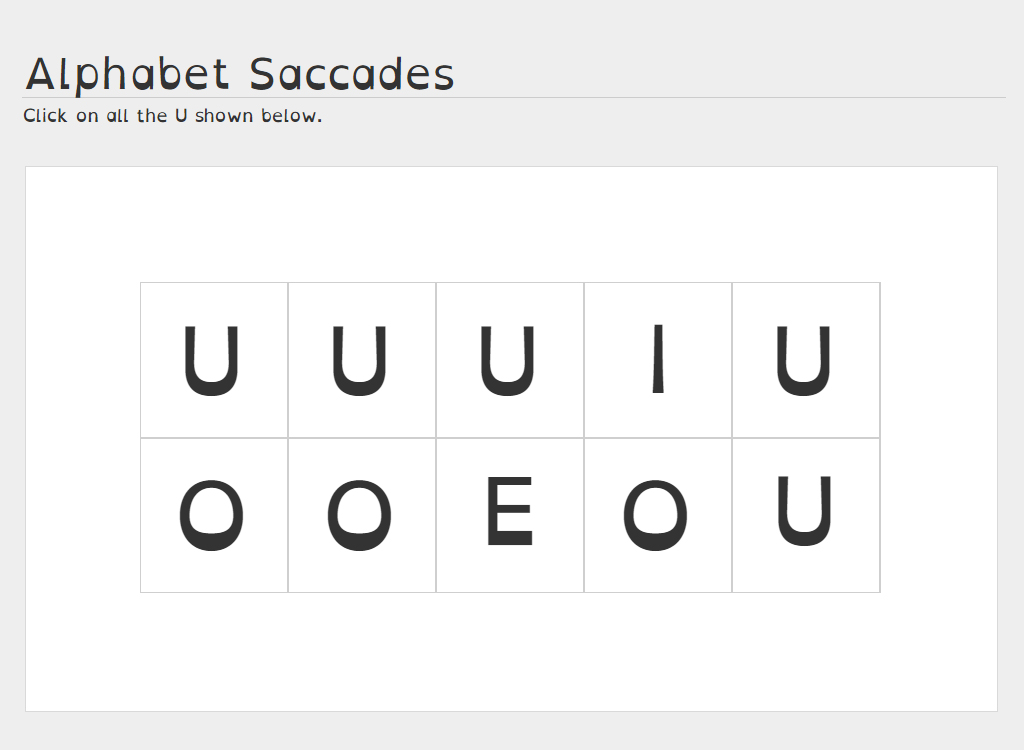Alphabet Saccades
Introduction
This activity is for children who have difficulty in recognizing alphabets.In this activity, the child has to identify an alphabet out of several.
Some children have difficulty in fixing the images of alphabets in their brain. This activity provides sufficient practice to fix the image of alphabets in the brain.
Tips for parents
We learn through visual, audio and tactile (touch) methods. We also learn by movements. If your child has difficulty in reading alphabets, the training should be given including all the above methods.
|
j |
l |
|||
|
q |
a |
h |
||
|
m |
w |
|||
|
g |
n |
|||
|
v |
k |
Some empty boxes can be provided as it would make it difficult for your child if all the boxes are filled up. Crowding of alphabets can be avoided. You say an alphabet and the child should locate it as quickly as possible. Observe the responses of the child and note alphabets that cause your child more difficulty. Prepare many worksheets for giving enough practice.
Charts can be provided for fluency reading. A sample chart is given below.
|
m |
w |
n |
u |
c |
|
n |
u |
m |
w |
c |
|
c |
w |
u |
c |
m |
|
w |
w |
n |
m |
u |
|
n |
u |
c |
n |
m |
Ask the child to read the alphabets as quickly as possible. Charts can be prepared similarly for uppercase (capital) letters also. To reinforce the learning, you can prepare fluency chart having both lower and upper case letters.
Dictation of alphabets is also a good activity.
Some more activities:
- Children can learn better by writing alphabets on a board in large size. Ask the child to write slowly. Also the child can write in air. The letters can be written slowly in air as large as possible. This gives time for the brain to register the activity. While writing, the child can say the letter aloud.
- Montessori used soft emery paper to make the children get a tactile experience. Writing letters on sand or on any rough surface (not too rough) with the index finger is a good activity. You can ask the child to dip the finger in water and write on a wooden surface- table etc. (not too smooth). The impression left by water can be seen by the child.
- Alphabet songs are especially useful for children who are more comfortable with auditory learning.
- The child can also be thought how letters are formed. To teach lower case letters, the alphabet c is a good starting point. You can teach your child how alphabets are formed with c. Two c joined together is o. u, n are c in different positions. Two n make m. h is n with a handle. b, d, p, q, a , e and g have c in them.
- While teaching upper case ( capital) letters, you can use the concept of straight lines and slanted lines.
Many worksheets and videos are available in the net to help you teach alphabets.

